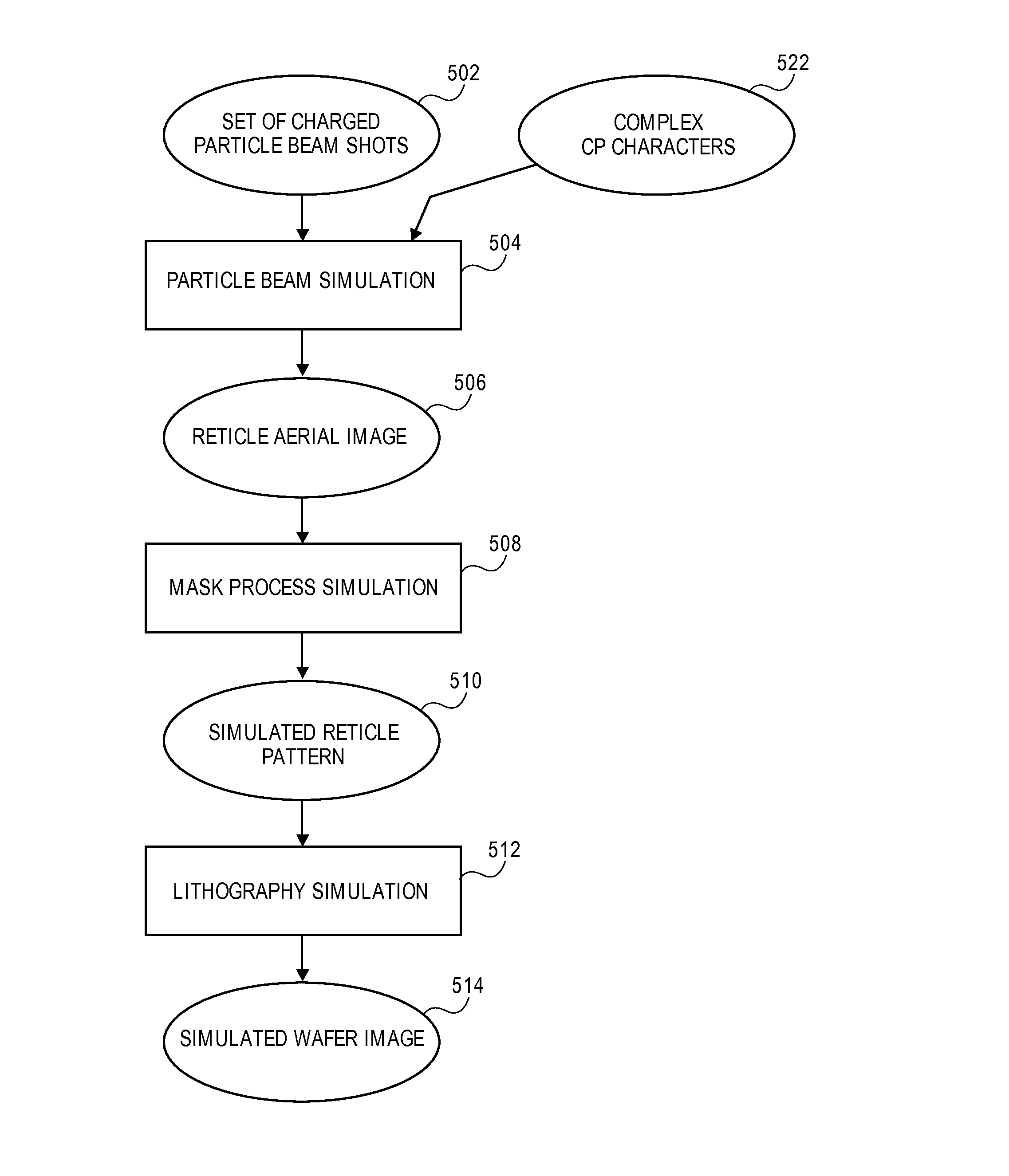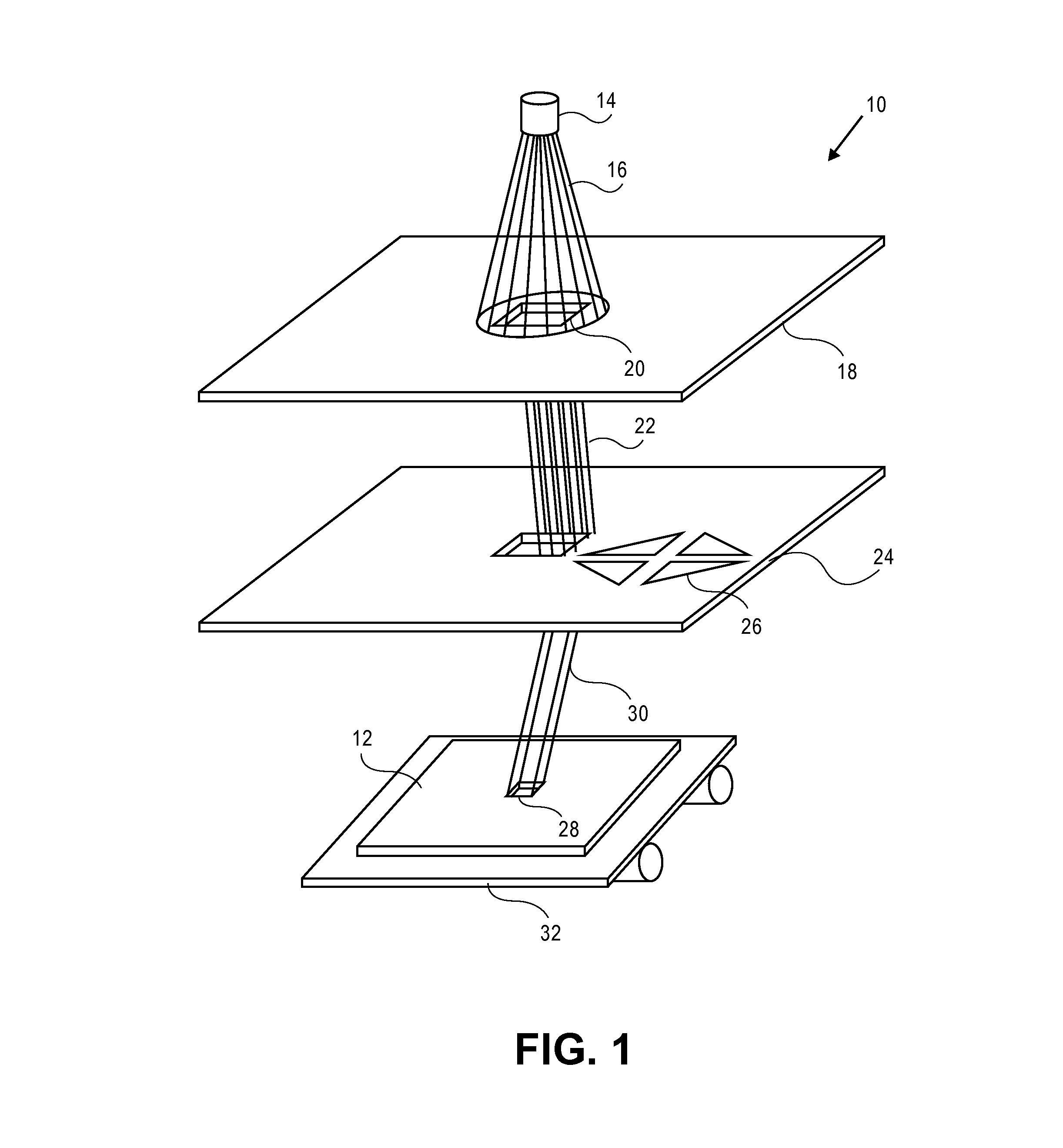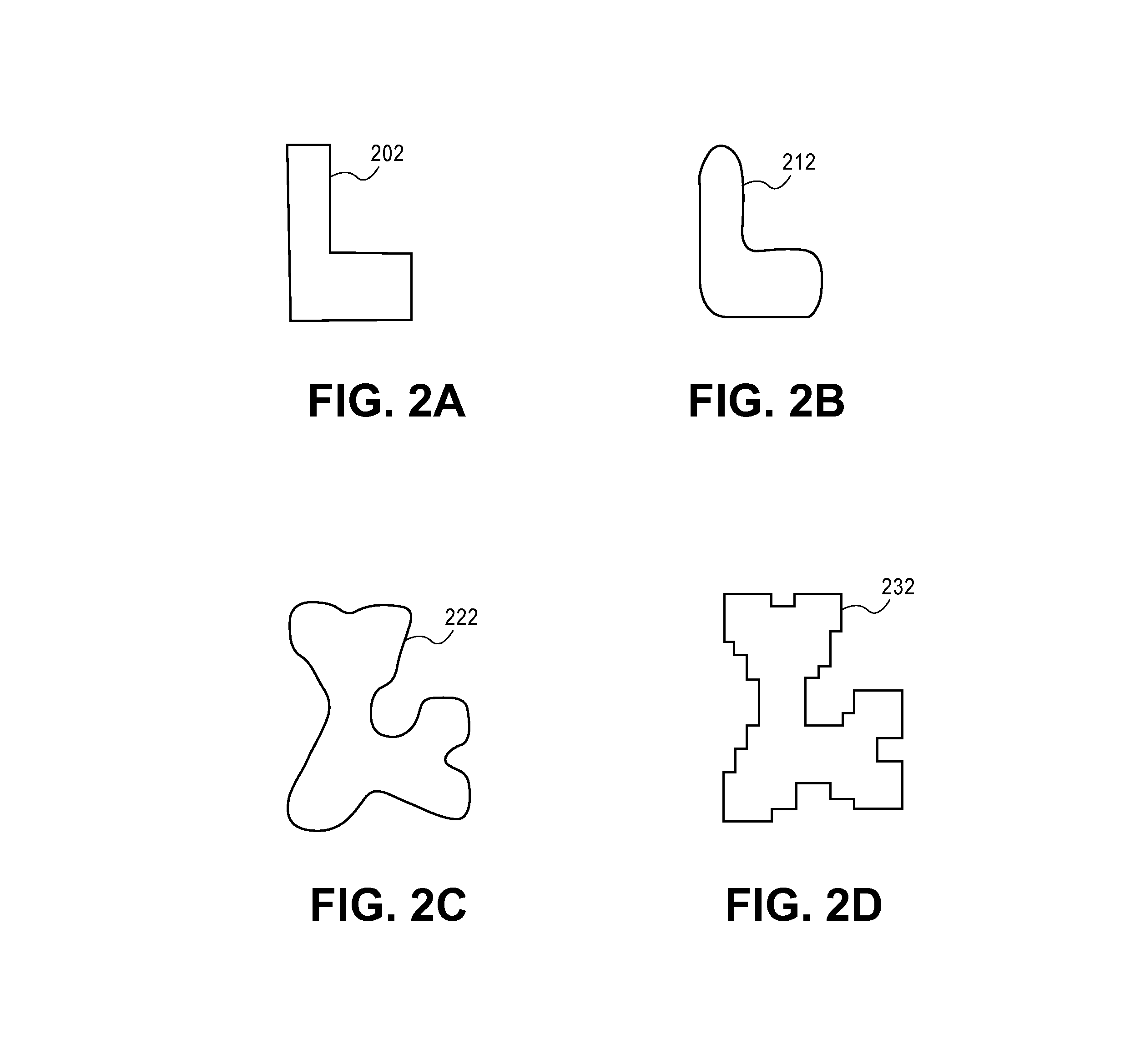Method and System for Optimization of an Image on a Substrate to be Manufactured Using Optical Lithography
a technology of optical lithography and image, applied in the field of lithography, can solve the problems of difficult to accurately translate the physical design to the actual circuit pattern developed on the resist layer, requires costly computation time, and difficult to add opc features, etc., and achieve the effect of improving the calculated substrate imag
- Summary
- Abstract
- Description
- Claims
- Application Information
AI Technical Summary
Benefits of technology
Problems solved by technology
Method used
Image
Examples
Embodiment Construction
[0028]The improvements and advantages of the present disclosure can be accomplished using double simulation to determine an image that will be formed on a substrate such as a silicon wafer using an optical lithographic process, and then modifying the set of shots so as to improve or optimize the simulated substrate image.
[0029]Referring now to the drawings, wherein like numbers refer to like items, FIG. 1 identifies an embodiment of a lithography system, such as a charged particle beam writer system, in this case an electron beam writer system 10, that employs a variable shaped beam (VSB) to manufacture a surface 12 according to the present disclosure. The electron beam writer system 10 has an electron beam source 14 that projects an electron beam 16 toward an aperture plate 18. The plate 18 has an aperture 20 formed therein which allows the electron beam 16 to pass. Once the electron beam 16 passes through the aperture 20 it is directed or deflected by a system of lenses (not shown...
PUM
 Login to View More
Login to View More Abstract
Description
Claims
Application Information
 Login to View More
Login to View More - R&D
- Intellectual Property
- Life Sciences
- Materials
- Tech Scout
- Unparalleled Data Quality
- Higher Quality Content
- 60% Fewer Hallucinations
Browse by: Latest US Patents, China's latest patents, Technical Efficacy Thesaurus, Application Domain, Technology Topic, Popular Technical Reports.
© 2025 PatSnap. All rights reserved.Legal|Privacy policy|Modern Slavery Act Transparency Statement|Sitemap|About US| Contact US: help@patsnap.com



